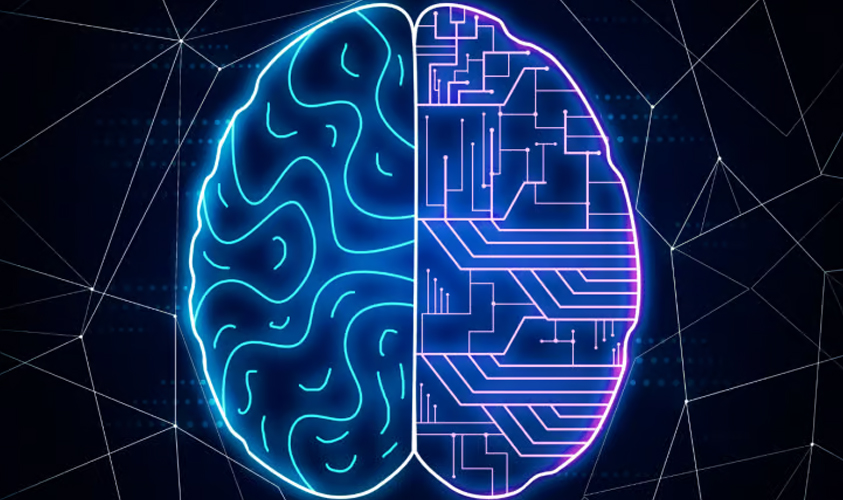
Machine Learning (ML) & K-12 curriculum
The impact of Artificial Intelligence (AI) and Machine Learning (ML) on K-12 curriculum is multifaceted and evolving. Here are some ways in which AI and ML are influencing K-12 education:
Integration of Computational Thinking: AI and ML introduce students to computational
thinking, problem-solving skills, and algorithmic approaches. This can be integrated into
various subjects, helping students develop a deeper understanding of how technology works.
Coding and Programming Education: As AI becomes more prevalent, there is an increased emphasis
on teaching coding and programming skills at an early age. Platforms and tools designed for
K-12 students often incorporate elements of AI and ML, providing hands-on experiences.
Data Literacy: Understanding data is a crucial skill in the age of AI. K-12 curricula are
adapting to include elements of data literacy, teaching students how to collect, analyze,
and interpret data.
AI as a Subject: Some schools are introducing AI as a standalone subject. This might cover
the basics of how AI works, ethical considerations, and its real-world applications. It can
provide students with a foundational understanding of this technology.
Personalized Learning Paths: AI can help in tailoring educational content to individual student
needs. Adaptive learning platforms use ML algorithms to adjust the difficulty level and pace of
lessons based on a student's progress and performance.
AI-Generated Content: AI tools can assist in generating educational content, including quizzes,
exercises, and tutorials. This can be valuable for educators in saving time and ensuring that
content is aligned with curriculum standards.
Robotics and AI Projects: Hands-on projects involving robotics and AI can engage students in
practical applications. Building and programming robots or AI models can foster creativity
and problem-solving skills.
Real-world Applications: AI can be used to show real-world applications of concepts learned
in the classroom. For example, students can explore how AI is used in healthcare, finance,
or transportation.
Ethical Considerations: Discussions about the ethical implications of AI and ML are increasingly
important. This includes addressing issues related to bias, privacy, and the responsible use of
technology. Incorporating ethical discussions into the curriculum helps students become responsible
digital citizens.
Career Readiness: Understanding AI and ML is becoming essential for various career paths. By
introducing these concepts in K-12, students are better prepared for future academic and
professional opportunities.
However, it's important to approach the integration of AI and ML into K-12 education thoughtfully. Considerations such as teacher training, access to technology, and ethical concerns need to be addressed to ensure that the benefits of these technologies are maximized while minimizing potential challenges. Additionally, the curriculum should be dynamic and adaptable, reflecting the rapid advancements in AI and ML.
Integration of Computational Thinking: AI and ML introduce students to computational
thinking, problem-solving skills, and algorithmic approaches. This can be integrated into
various subjects, helping students develop a deeper understanding of how technology works.
Coding and Programming Education: As AI becomes more prevalent, there is an increased emphasis
on teaching coding and programming skills at an early age. Platforms and tools designed for
K-12 students often incorporate elements of AI and ML, providing hands-on experiences.
Data Literacy: Understanding data is a crucial skill in the age of AI. K-12 curricula are
adapting to include elements of data literacy, teaching students how to collect, analyze,
and interpret data.
AI as a Subject: Some schools are introducing AI as a standalone subject. This might cover
the basics of how AI works, ethical considerations, and its real-world applications. It can
provide students with a foundational understanding of this technology.
Personalized Learning Paths: AI can help in tailoring educational content to individual student
needs. Adaptive learning platforms use ML algorithms to adjust the difficulty level and pace of
lessons based on a student's progress and performance.
AI-Generated Content: AI tools can assist in generating educational content, including quizzes,
exercises, and tutorials. This can be valuable for educators in saving time and ensuring that
content is aligned with curriculum standards.
Robotics and AI Projects: Hands-on projects involving robotics and AI can engage students in
practical applications. Building and programming robots or AI models can foster creativity
and problem-solving skills.
Real-world Applications: AI can be used to show real-world applications of concepts learned
in the classroom. For example, students can explore how AI is used in healthcare, finance,
or transportation.
Ethical Considerations: Discussions about the ethical implications of AI and ML are increasingly
important. This includes addressing issues related to bias, privacy, and the responsible use of
technology. Incorporating ethical discussions into the curriculum helps students become responsible
digital citizens.
Career Readiness: Understanding AI and ML is becoming essential for various career paths. By
introducing these concepts in K-12, students are better prepared for future academic and
professional opportunities.






